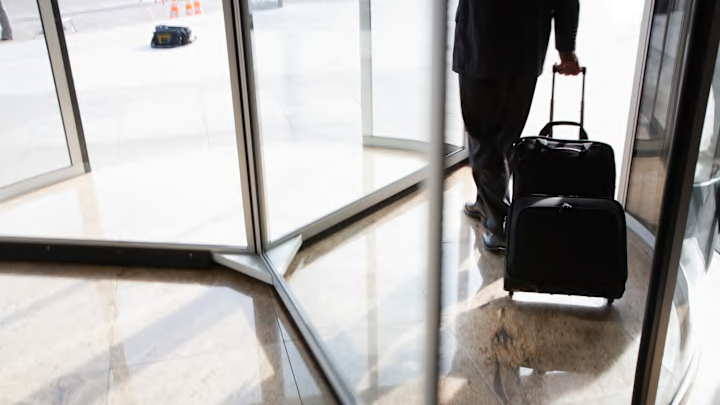You’ve just spent 12 hours on an international flight. You didn’t close your business deal with your partners. Your seatmate snored the entire time, which failed to block out the sound of the sobbing infant behind you. You just want to go home.
In your path: Three automatic glass exit doors that slow your progress out of the airport terminal. It feels like one door may close behind you while another may never open, trapping you in Newark for eternity. Why are they there? Can’t you just walk out of a single set of doors like everywhere else?
Not really. And the reasons are about what you’d expect: security and saving airports some money.
According to the Transportation Security Administration (TSA), the tiered exits are known as multilayer portals. They separate secure, or sterile, areas inside the terminal from public areas on the other side. Airports want travelers to exit, but they don’t want unscreened or unknown people to enter the sterile part, a scenario that played out in 2010 when a man at Newark Liberty International Airport slipped under a rope to meet up with a girlfriend about to board a flight. The security breach led to flight delays worldwide.
The portal provides a (mostly) effective solution by creating a pause between door openings. Suppose you head for the exit. The first set of doors are activated, sandwiching you into a small space between those doors and the next set. Once the doors behind you have closed, the doors in front open. The process is repeated one more time before the third set opens, jettisoning you into the public area of the airport or a pick-up or parking lot.
This halting rhythm doesn’t really allow for people outside to get in. If they sneak into the public-facing doors as a traveler exits, the middle set will remain closed. They won’t be trapped, as the doors they just passed will remain open. But it's not just about keeping unscreened people out: If a departing traveler wanted to turn around and go back inside, they wouldn’t be able to. The sterile-facing doors would remain shut.
Not all exit portals operate exactly the same way. Airport security officials may choose to have the portals in interlock mode, like the one described, or in flow mode, where the doors open concurrently [PDF]. They may opt for the latter during periods of high traffic so exiting out the terminal doesn’t get backlogged. Obviously, speed comes at a cost: It’s more likely that someone could breach the sterile side if the doors are opening simultaneously.
How fast passengers can leave also depends a little on human behavior. When passengers are confronted with a few sets of exit portals, some may tend to fall in line behind others waiting to leave rather than find an unobstructed lane, leading to congestion.
The three-tiered exit portals are a somewhat newer development. Previously, airports had relied on a revolving door (or tube) similar to those found in some hotels. These worked on a similar open-close principle, but traffic flow was severely impeded by them and led to several complaints that led to some airports upgrading. Syracuse Hancock International Airport had the tube style installed in 2012. By 2020, they were opting for the three-door portal.
Either way, airports see the automatic doors as a cost-cutting measure. Those Syracuse tubes cost $750,000 to install; stationing security guards at the exits would cost about $580,000 annually, meaning the airport likely saved millions over the years.
Still, some airports may opt to retain guards or older technology, meaning that you won’t always find the portals. And owing to the delay in exiting, some have suspected that security might be “scanning” them or otherwise intruding on their privacy. There’s no evidence of this, however. It’s just a test of patience—something airports specialize in.
